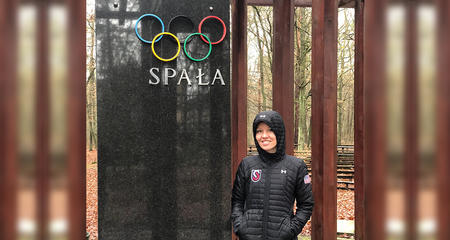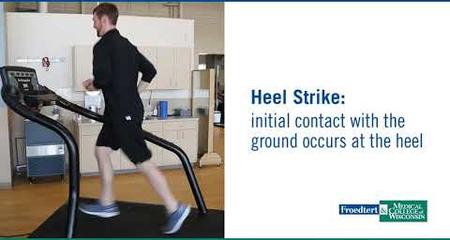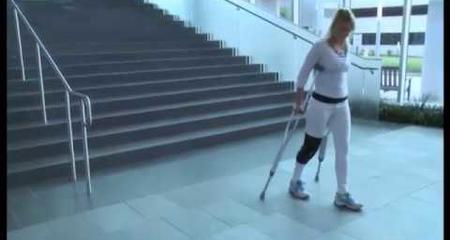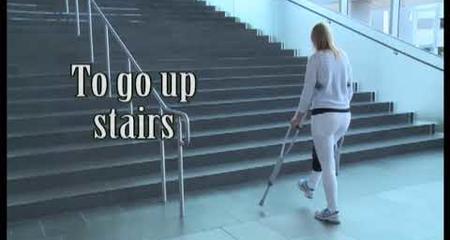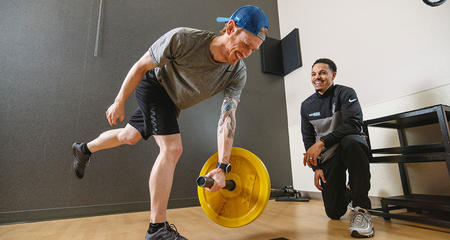The rotator cuff is a group of four tendons in the shoulder that rotate and elevate the arm. They help you raise and rotate your arms. Most of the time, a rotator cuff tear is due to wear and tear as we age. This usually starts out as a minor partial tear but may progress to a full tear over time. Rotator cuff tears are common and are not always painful or symptomatic.
Some jobs can increase your risk for rotator cuff injury, such as occupations that involve repetitive work or heavy lifting. For some people, a rotator cuff tear may occur suddenly because of a fall or while lifting a heavy object. Rotator cuff injuries can happen to all types of athletes who often use their arms in the overhead position, including baseball players, swimmers, tennis players, volleyball players and others.
Signs of a Rotator Cuff Tear
- Pain in the shoulder, typically on the front or outside of the shoulder. The pain does not respond to basic nonsurgical treatments such as ice, modifying your activity levels or over-the-counter pain relief medications.
- Progressive weakness, especially with use of the arms above chest-level.
Expert Diagnosis for Rotator Cuff Tears and Injuries
A rotator cuff tear is usually diagnosed with a physical examination by an orthopaedic shoulder specialist. The diagnosis is confirmed with an MRI to confirm the extent of the injury.
Rotator Cuff Tear Treatment
Rotator cuff tears can be partial thickness or full thickness.
A partial thickness tear means the tendons are damaged but not fully torn off the bone. Most people with partial tears can recover without surgery. The initial treatment for partial rotator cuff tears usually consists of anti-inflammatory medications, physical therapy and avoiding repetitive activities that could cause further damage.
Surgery for Rotator Cuff Repair
For people with a full thickness tear or partial tears that do not improve with conservative treatment, a minimally invasive procedure called a shoulder arthroscopy can repair the tendons. During arthroscopic surgery, a camera is inserted into the shoulder so the surgeon can visualize the entire joint and assess the damage. The damaged structures can then be repaired through tiny incisions using specialized surgical instruments. This is an outpatient procedure performed at a few of our locations.
Some patients may need to have a traditional open procedure, which involves a longer incision.
Recovering from Rotator Cuff Repair
Most people experience pain relief in the first few weeks after arthroscopic rotator cuff repair and continue to improve over the next several months. Physical therapy is very important after rotator cuff surgery. It will help you regain full range of motion, strength and function of the shoulder. The success rate after arthroscopic rotator cuff surgery is 90% to 95%.
The Difference Between Arthritis and Rotator Cuff Tears
Rotator cuff tears and shoulder arthritis are different conditions. Arthritis is when the joint cartilage deteriorates. It is more common to have arthritis in weight bearing joints, like the knees and hips, than in the shoulders. Most of us probably know far more people who have had knee replacement than shoulder replacement. Rotator cuff tears are more common than shoulder arthritis because the greatest stress in the shoulder is on the tendon due to normal, everyday lifting activities, not on the joint cartilage.
Rotator Cuff Tear Arthropathy
However, rotator cuff tears that are left untreated for many years can lead to rotator cuff tear arthropathy, which is a form of arthritis. It is a specific pattern of degeneration in the joint that can only be treated with an advanced procedure called a reverse total shoulder replacement. In this procedure, the normal ball and socket structure of the shoulder is reversed with a special prosthesis.
Reverse total shoulder replacements are also used to treat patients with massive rotator cuff tears where two of the four rotator cuff tendons are torn and the tear exceeds 5 centimeters. For people with massive tears, the tissue quality is poor, and standard techniques like shoulder arthroscopy are less likely to be successful.
Because of our specialized training, we offer 3-D templated reverse total shoulder replacement to patients using the most advanced techniques and equipment available.
If you are concerned you might have a serious shoulder condition, you should find an orthopaedic surgeon who specializes in the shoulder. Research has shown that surgeons who specialize in a specific area and have more experience offer patients better outcomes.
More to Explore

